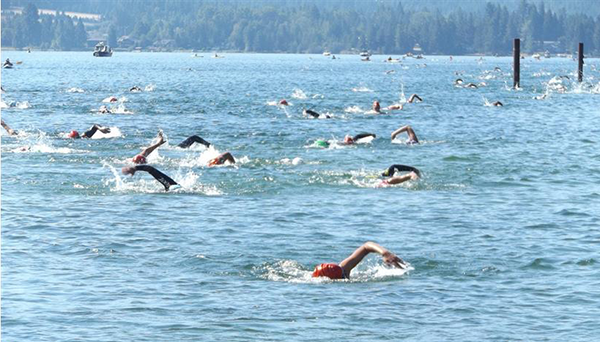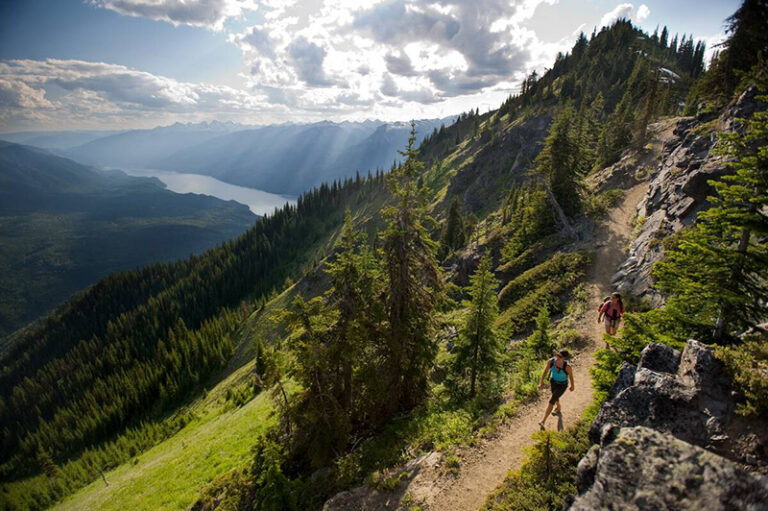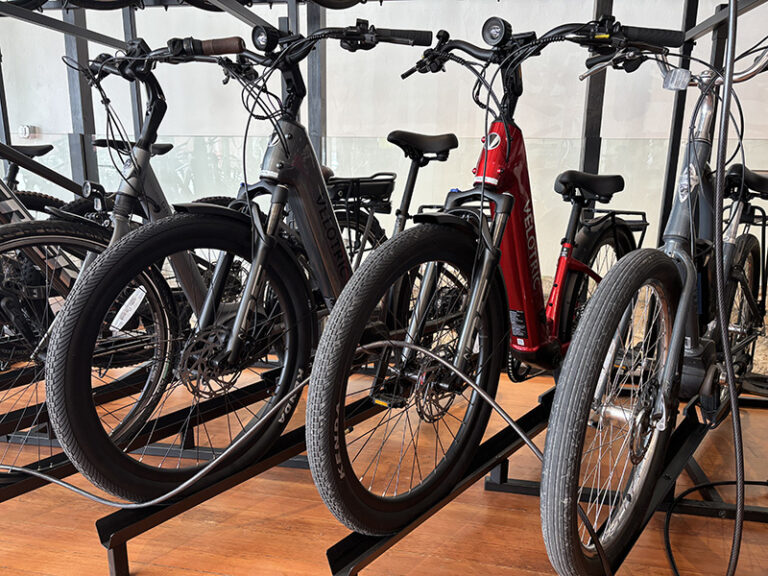By Susan Hales
Calling all open water swimmers. We know you are out there. The ones who pull off I-90 for a dip at the Vantage boat ramp. The ones who hastily shed backpacks to plunge into glacial alpine lakes.
There is no body of water that does not tease you, no water too cold, too rough or too wild to challenge you. You swim the lakes, rivers and coasts, testing your limits with the cold, chop, and distance. You meet up at open water races in the Coeur d’Alene, Pend Oreille and Flathead, hungry to learn of other nearby events.
What is Open Water Swimming?
Open water swimming (OWS) is growing rapidly, especially since joining the Olympics in 2008. If you haven’t tried it yet, or if you’re bored swimming laps, this could be a great opportunity to explore a new athletic frontier. OWS is not just for the Diana Nyads and Olympic hopefuls.
Whether you swim a race to say, “I did it!” or strive to beat your record (or sister, like me), everyone can connect through common race strategies. On race day, we check-in, attend the pre-race meeting, then crowd the beach, impatient until, finally, the starting horn. We plunge in, an excited mass of arms and feet in frothy water.
Heading off, we sight the first race buoy and look beyond to more buoys marking the course. Kayakers and paddleboarders make sure we don’t stray, and help anyone in distress. Nearing the end, buoys direct us to a well-marked finish line and a cheering crowd. Electronic or volunteer time keepers note our time. At the closing ceremony after the race, awards are presented to the winners.
Races in our snow-fed lakes are not warm pool parties. Hearty adventurers wear just swimsuit, goggles and cap. They train in very cold water, sometimes putting on a few pounds for insulation.


Susan Hales swimming at Medical Lake. // Photo: Summer Hess
Gear for Open Water Swimming
The rest of us appreciate specialized gear. Fortunately, we have come a long way since swimmers crossed the English Channel wearing aviator goggles and a thick layer of bear grease for warmth.
The most basic piece of OWS equipment is the neoprene, triathlon wetsuit. These come in full body, short sleeve and leg, and farmer john sleeveless styles. They are designed for warmth and speed and add buoyancy.
Thickness varies from 5mm, wonderful for very cold water, to the more popular 2 and 3mm varieties. Thinner arms and shoulders provide stroke flexibility.
Fit is crucial for comfort and safety, so it is best to try out a wetsuit before buying. The perfect wetsuit is snug and may require some psychological adjustment to get used to, but it will protect you for hours in our northern lakes and extend your swim season by many months.
OWS Safety Precautions
The first rule of swimmer safety is to swim with a buddy. The addition of a bright, safety float makes us visible to any boaters. Mine is a drysack, handy for a space blanket, snacks, and bringing home a newspaper from across the bay.
Preparing for your first open water race also means getting used to no lanes, no flags, and no clock over the swimming pool. With practice, breathing normally and sighting along the surface become second nature. Open water swimmers train for distance endurance and finish speed.
I recommend beginning in the late spring or early summer with one-mile swims in Medical Lake or Liberty Lake. As Pend Oreille warms, I take two, then three mile and occasional longer swims, broken up by shorter one-mile swims.
Every open water swim trains us for the unusual and unexpected cold, wind, sun, rain, waves, and currents on race day. For me, training swims are aesthetic, sensory experiences of pulling, turning, and gliding through space and time.
Eagles fly overhead, deer glance up from the shore, fish dart away, submerged fallen trees reach up with shaggy branches, and underwater boulders create the remarkable sensation like you’re flying over mountains. You’ll never know how much fun it can be unless you give it a try.

Looking to give open water swimming a try? Sign up for one of these events around the Inland Northwest this summer.
- Flathead Lake Swim Series: Flathead Lake, Montana (10k, 5k, 1 mile, or .5 mile)
- Long Bridge Swim: Lake Pend Oreille, Sandpoint, Idaho (1.76 mile), August
- Coeur d’Alene Crossing: Coeur d’Alene Lake, Idaho (1.2 mile or 2.4 mile), August
- Lake Chelan Swim: Lake Chelan, Washington (1.5 mile), September – first Saturday after Labor Day
Susan Hales has a ritual of swimming across the bay to pick up the Sunday paper. It’s only a 1.9-mile swim from her cabin on Lake Pend Oreille to Odie’s Bayside Grocery.
Learn more about open water swimming with these stories from the OTO archives.
[Updated: June 2021]













